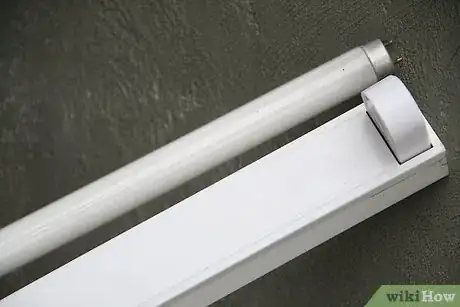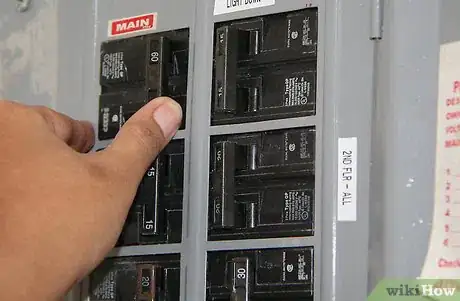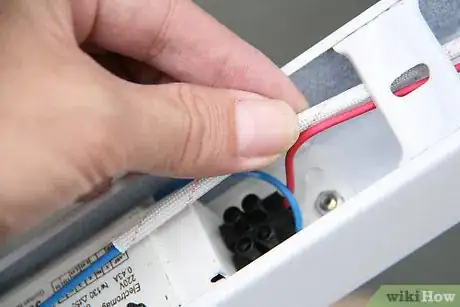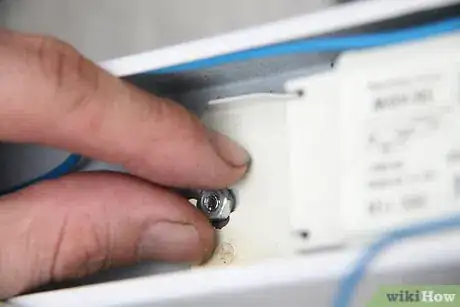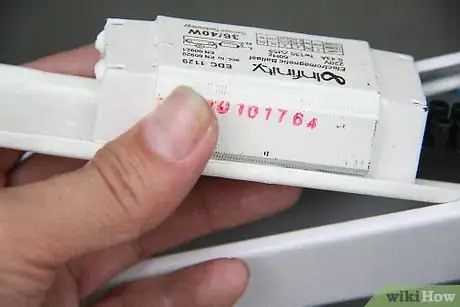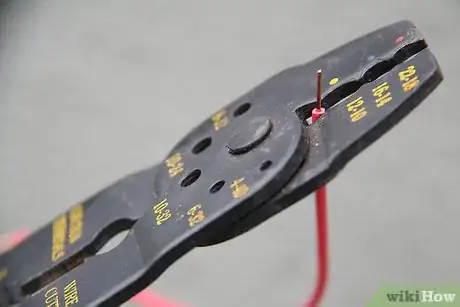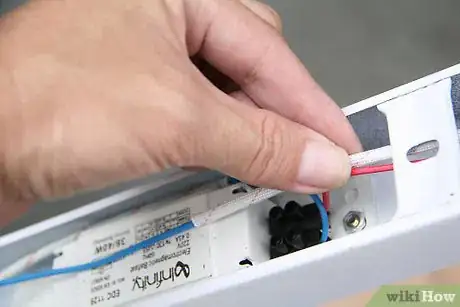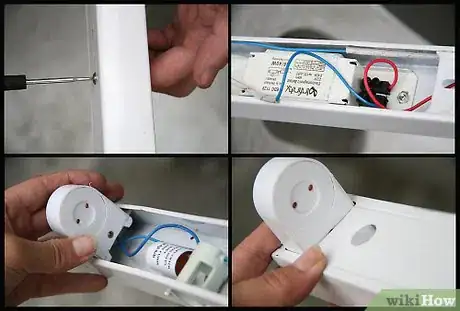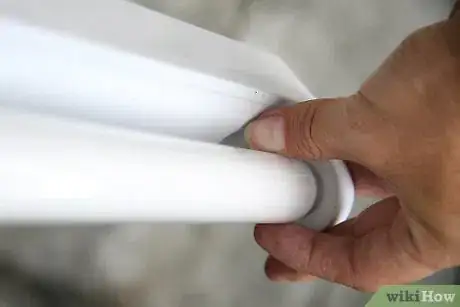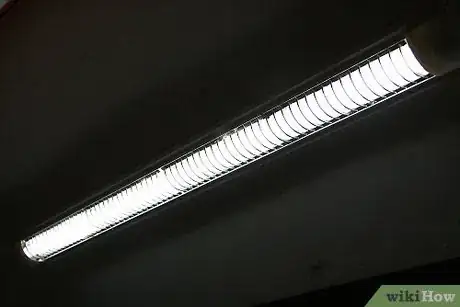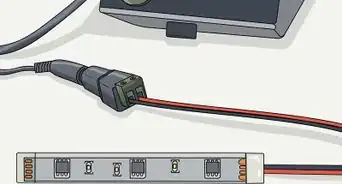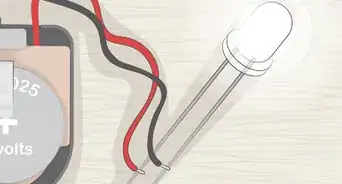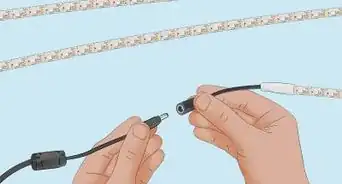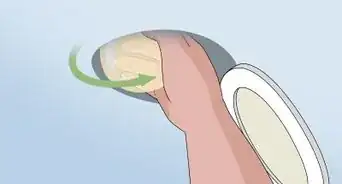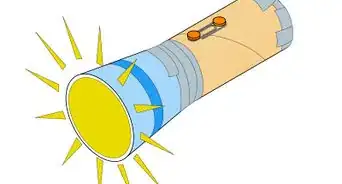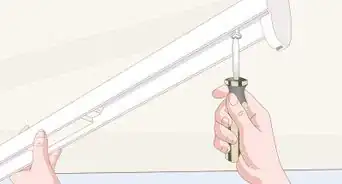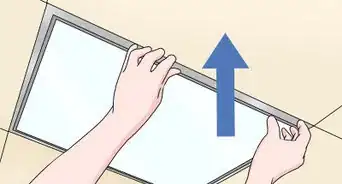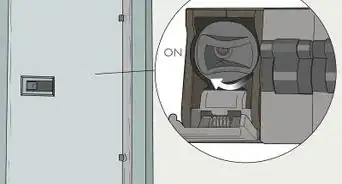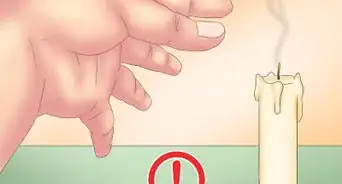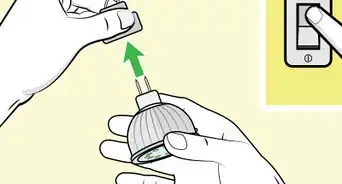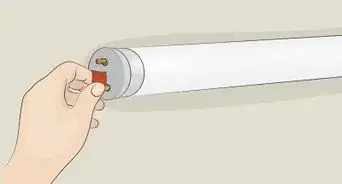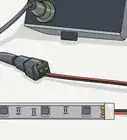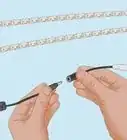This article was co-authored by James Hornof. James Hornof is a Master Electrician and the Owner and President of B & W Electric based in Denver, Colorado. With over two decades of experience in the electrical construction industry, James specializes in field installation, management, estimating, and design. He graduated top of his class in electrical trade school and studied Business Management at The Community College of Denver. James holds a Master Electrician license in Colorado, Wyoming, and Texas.
This article has been viewed 1,063,067 times.
All fluorescent light fixtures consist of at least lamp(s), lamp holders, ballast and internal wiring. Some older types have "starters", too. The ballast is used to create the voltage and current necessary to start and illuminate the fluorescent lamp. In time, the ballast may need to be replaced. Read on to learn how to swap out the old with an approved replacement ballast of the same technology. Please read the entire article and warnings before attempting.
Steps
Community Q&A
-
QuestionThe old ballast has three wires, red, black, and white. The new ballast has 5 wires, red, black, white, and two blue. How do I wire in the new ballast?
 Community AnswerMost likely that is a different generation of ballast. Cap the two blue wires and install the red, black, and white as usual. It should work fine.
Community AnswerMost likely that is a different generation of ballast. Cap the two blue wires and install the red, black, and white as usual. It should work fine. -
QuestionMy fluorescent light fixture sometimes turns on and then sometimes won't. How do I fix that?
 Community AnswerIf it has a starter (a small aluminum-looking cylinder that screws in below the bulb), replace that. If not, replace the ballast.
Community AnswerIf it has a starter (a small aluminum-looking cylinder that screws in below the bulb), replace that. If not, replace the ballast. -
QuestionIf only one light works in a fixture, is the ballast bad?
 Community AnswerProbably not. If the fixture is a 2 tube fixture, it is probably a single bad tube. If both the tubes are old, you might consider replacing both of them with newer, slightly lower wattage ones to save electricity. For example, if they are 40 watt, try some 32 watt tubes..
Community AnswerProbably not. If the fixture is a 2 tube fixture, it is probably a single bad tube. If both the tubes are old, you might consider replacing both of them with newer, slightly lower wattage ones to save electricity. For example, if they are 40 watt, try some 32 watt tubes..
Warnings
- Select a ballast that has either the exact same part number or is a direct replacement based on type (electronic or electromagnetic technology) input voltage, number and type of lamps, wattage and if desired, sound rating. Additionally, both magnetic and electronic ballasts often come in either "Rapid Start" (a/k/a Programmed Start or "PS") or "Instant Start" ("IS") versions. Your choice should be determined by how the fixture is primarily used, i.e., if most always left on for 10+ hours at a time choose "IS" which is slightly more energy efficient of the two starter types, but if frequently turned off and on, use a "Rapid Start" for longer bulb and ballast life.⧼thumbs_response⧽
- When working on any electrical components it is recommended that you wear non-conductive shoes, stand on a piece of plywood, or use a wooden ladder. Do not lean or touch conductive surfaces while working on the circuit. If you are unsure if the circuit is hot or you must work on a hot circuit, use one hand only, stick the other in your back pocket. Use a voltmeter or preferably a voltage sensor to ascertain the voltage on all colors of wire in the box or circuit with respect to ground.⧼thumbs_response⧽
- A fluorescent fixture should never be in contact with combustible materials, due to the heat created by the ballast. Provide 1 inch (2.5 cm) (25 mm) of air space between the fixture and any combustible materials to reduce fire hazards.⧼thumbs_response⧽
- If retro-fitting a new electronic ballast for a failed magnetic ballast, the new ballast may require new energy efficient lamps - and new holders sized to fit pins of the lamp. The old lamp holders may not support the new lamps, and the new ballast may not light the old lamps. Given the amount of time and money to be spent on this retro fit, it may be advisable to either replace the failed ballast with the same electromechanical technology or replace the entire fixture altogether.⧼thumbs_response⧽
- Properly recycle spent fluorescent lamps. All fluorescent lamps contain mercury (even the supposed "environmentally friendly" types with the green end caps), and care should be taken to prevent breakage.⧼thumbs_response⧽
- If pursuing a retrofit, schematic reading skills will be required. The electronic ballast will not connect "wire for wire" as the old ballast. It is most imperative that the schematic on the new ballast be followed exactly. Check for lamp type supported by the ballast (likely T-8 type), and purchase lamp holders to fit lamps. If additional wire is needed between ballast and lamp holders, be sure the added wire is the same size and type insulation as the wire at the ballast. This will prevent overloading and fire hazard. Wire nuts (if needed) must be selected based on the size and number of wires being connected to one another.⧼thumbs_response⧽
References
- ↑ https://www.youtube.com/watch?v=3TLbr7CUpC4
- ↑ https://www.youtube.com/watch?v=E456CwPq1sI
- ↑ https://www.youtube.com/watch?v=3TLbr7CUpC4
- ↑ https://www.familyhandyman.com/electrical/fluorescent-light/how-to-replace-a-fluorescent-light-ballast/
- ↑ https://www.familyhandyman.com/electrical/fluorescent-light/how-to-replace-a-fluorescent-light-ballast/
About This Article
To safely replace the ballast in your fluorescent light, turn off the lamp, remove it, and check the voltage of the feed wires with a voltmeter. Then, use a nut driver to unscrew the nut holding the ballast in place and install the replacement ballast. Insert the red, blue, black and white wires in their corresponding holes, screw the nut back in place and replace the lamp. For advice on additional safety tips, as well as a method using wire cutting, read on!
